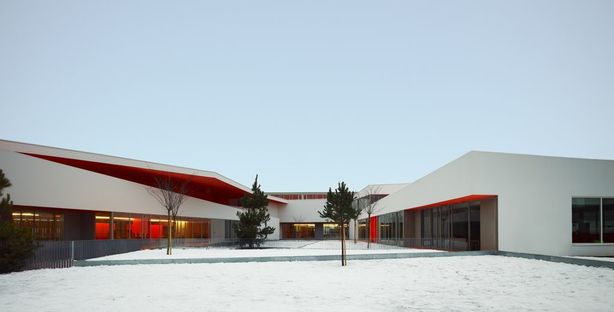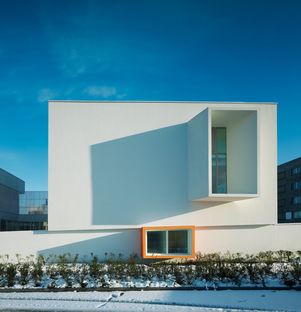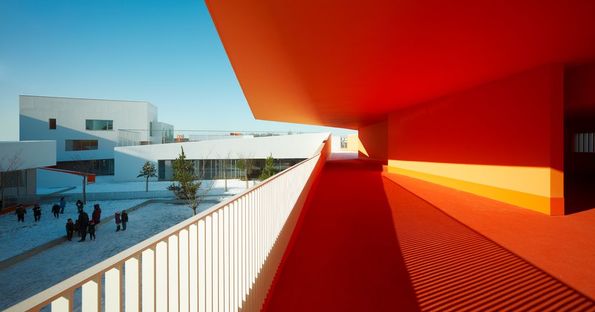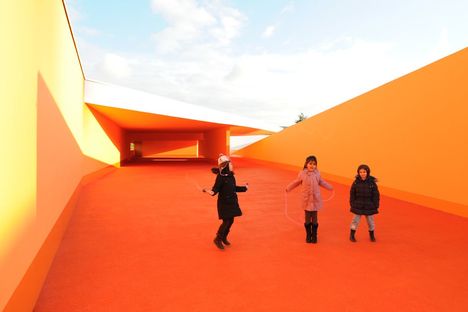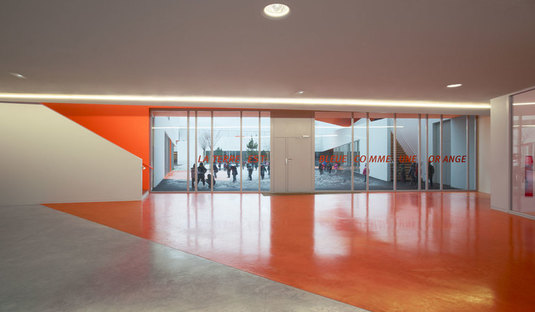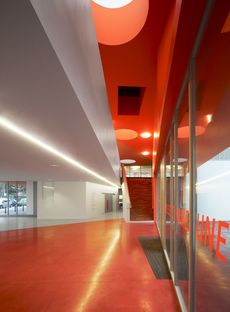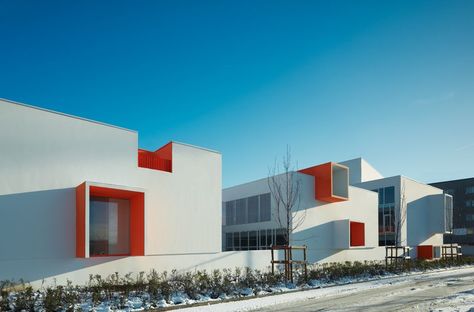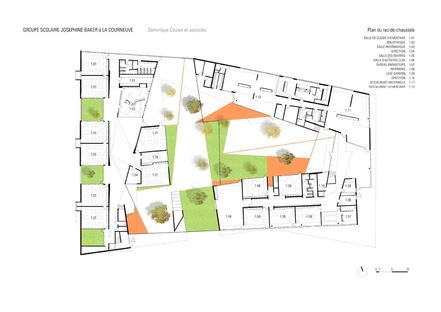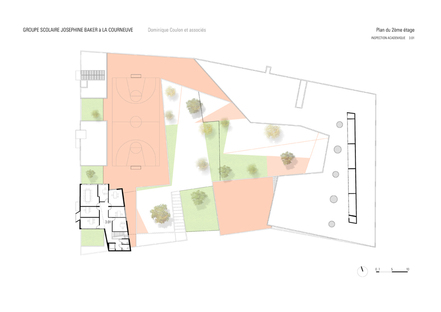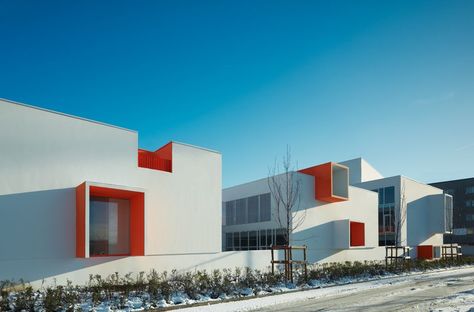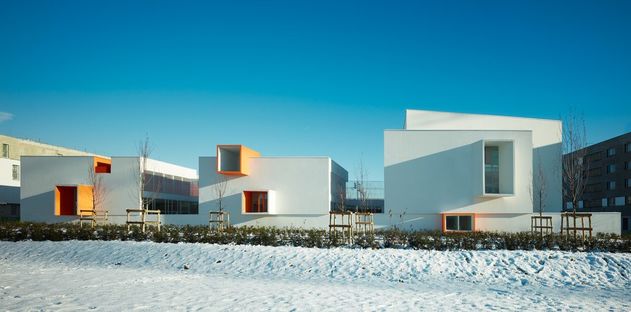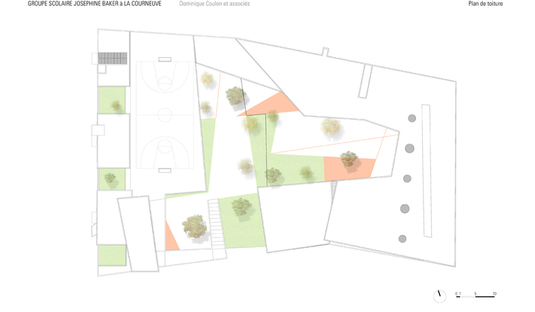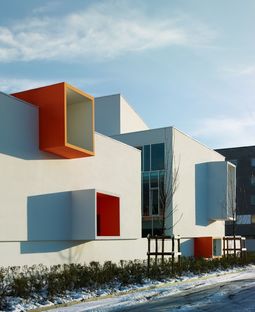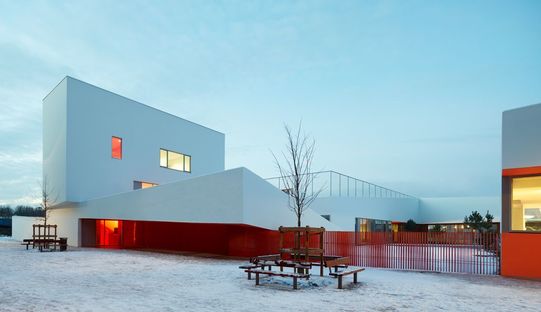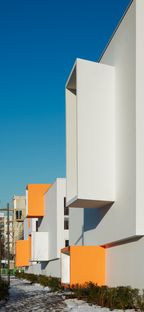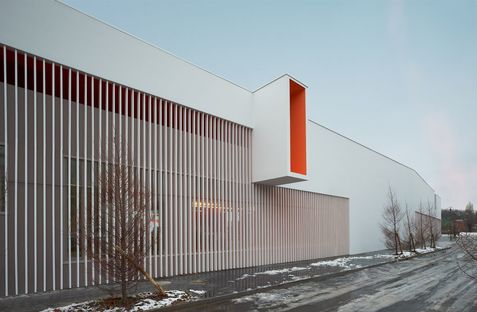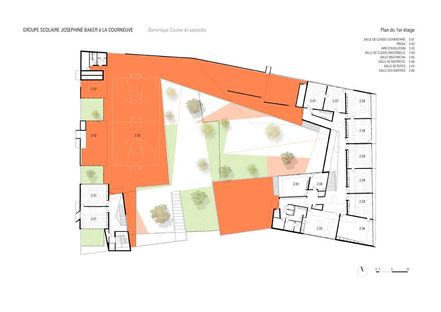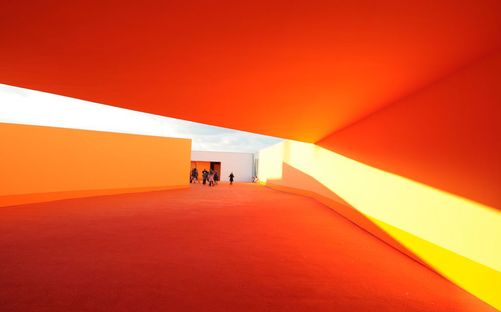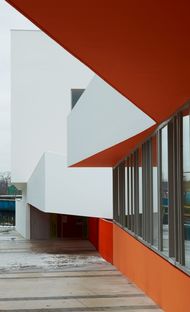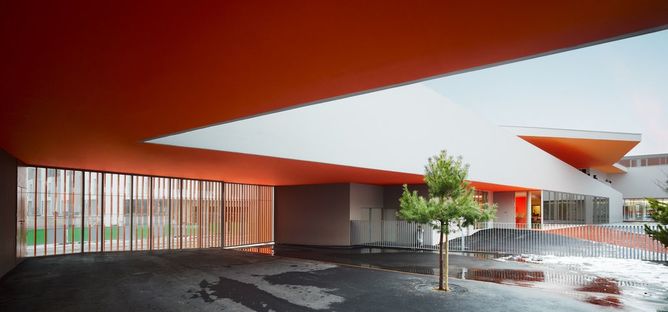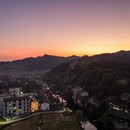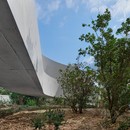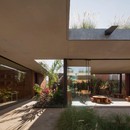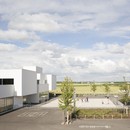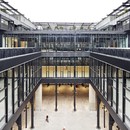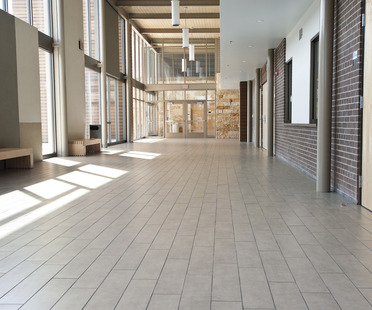11-07-2011
Dominique Coulon: Josephine Baker school
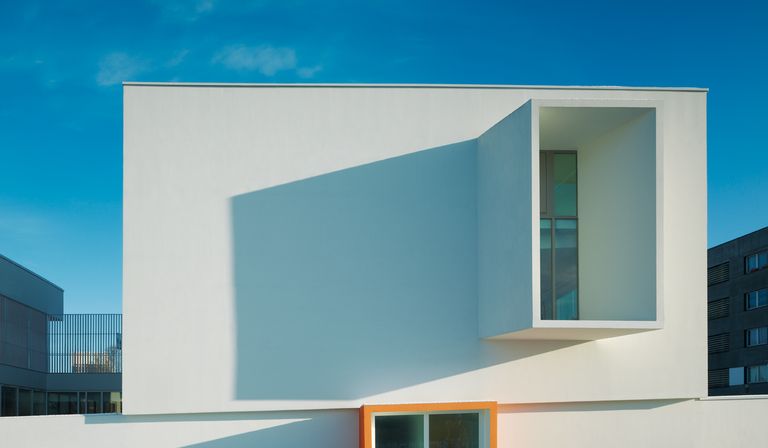 The school building
The school buildingJosephine Baker school, recently completed by Dominique Coulon, is a new building rising out of the ashes of a housing development built as part of the famous Cité des 4000, an urban planning scheme in the city of Paris in the fifties which quickly evolved from a densely populated residential neighbourhood into a ghetto for immigrants.
Inspired by Bernard Paurd?s urban planning scheme for the district, which does not ignore its past but picks up on the marks made by buildings of the past with the intention of starting again on the basis of its history rather than ignoring it, the school building is characterised by shut-in volumes with a horizontal orientation, interrupted and enlivened by windows that jut out, in which colour also contributes to the fragmentation of the façades. The floor plan is based on opposition of key functional spaces in the nursery school and the elementary school, connected with a play area on one side and a coffee shop on the other via a series of ramps circumscribing the garden, creating a ring which opens up only at the southern entrance.
The geometry of the internal and external walls reflects the signs of the urban planning scheme resulting from the many demolitions and new constructions the neighbourhood has seen: asymmetries and broken lines create numerous left-over spaces which look as if they have been grabbed away from the district?s historical vicissitudes and saved to promote its rebirth. The hardest line is the one that breaks the building in two from north to south level with the green courtyard, because it picks up on one of the Presov and Ravel apartment blocks that were blown up with dynamite on June 23 2004. Dating back to the planning scheme known as Cité des 4000, the city of 4000 homes, built starting in 1956, over the years the high-density housing developments became ghettos where the city of Paris sent its immigrants and poor families as it cleaned up the city centre. These banlieus, where the quality of life was very low and people felt abandoned by public institutions, soon became the scene of serious delinquency. When Paris transferred the Cité to the municipality of La Courneuve, permitting the area to re-appropriate its sense of being a community in itself rather than a suburb of the capital, a policy of urban recovery began, distinguished by demolition of many of the ?barres de logements" built in the fifties and sixties, including the Presov and the Ravel.
In this new building standing right on the demolition site, Dominique Coulon decided not to cancel the memory of this local history but to maintain it in the form of an urban sign testifying to a painful past, out of which a new building has been born with a very different function and design. The colour orange appearing in the windows and literally overflowing over the ramps seems to be a symbol of the neighbourhood?s rebirth.
by Mara Corradi
Design: Dominique Coulon & Associés, Architectes (Dominique Coulon, Olivier Nicollas)
Assistants: Sarah Brebbia, Benjamin Rocchi, Arnaud Eloudyi, Florence Haenel,
Client: City of La Courneuve
Location: La Courneuve, Paris (France)
Structural design: Philippe Clement, Cécile Plumier, Frédéric Blanc, Marc Damant, Annie Pikard
Landscaping design: Bruno Kubler
Total usable surface area: 6500 m2
Net surface area: 4500 m2
Completion of work: 2010
Photographs: © Eugeni Pons, Olivier Nicollas, Delphine George
www.coulon-architecte.fr










